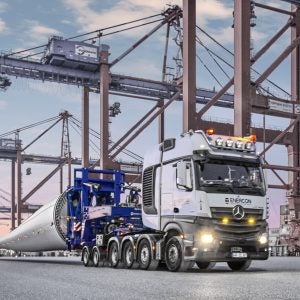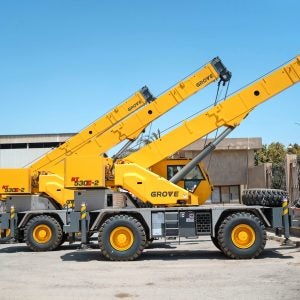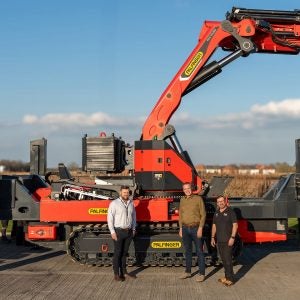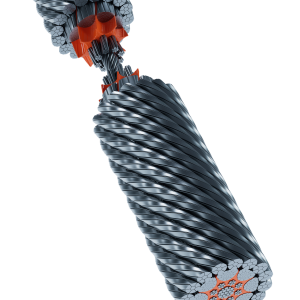Cranes Today can boast an institutional memory that stretches back decades beyond that of any competitor. Before the launch of Cranes Today, founder publisher Ian MacLaren and original editor Chris Wilson had worked together on Morgan Grampian’s publication, Cranes. When Morgan Grampian took the decision to close Cranes, the two saw the need for a magazine for the crane industry, and decided to strike out on their own and launch Cranes Today.
It took a break of a few months for the two to get the new magazine up and running. When they did, MacLaren opened the first issue with a ‘thank you’ to the magazines supporters — readers, advertisers and editorial contacts — who had stood by them while they put the new magazine together.
I’d like to repeat that thank you, forty years later: Cranes Today would not be the title it is today without the support of our enthusiastic readers, our loyal advertisers or our expert editorial contacts. We really couldn’t do it without you all.
I’d also like to thank my predecessors as editors. While I am another child of the 1970s, Cranes Today is a few years older than me. I wouldn’t know the industry as I have come to, or have the contacts I have, without the work those predecessors put into building the magazine, or the advice that many of them still give.
For our celebrations this month, I’ve been looking back over our November issues from the last four decades. Doing so, I see both radical changes, and repeating themes.
As a Brit, one of the most striking changes for me is the decline of my country’s crane manufacturing sector. Our first issue is very firmly aimed at the British industry, covering both crane users and manufacturers. It includes stories on, and adverts from, the likes of BCHC, Jones, Coles, Smiths, John Allen, and Stothert & Pitt.
The launch of Cranes Today came as Britain began a two-decade process of industrial relations turmoil and government disinterest that has decimated the country’s manufacturing industry in general, and crane industry in particular. Not one of those manufacturers remains building cranes today. By 1982, Britain’s industrial decline was in full swing: Coles Cranes owners Acrow were in the middle of a ‘reorganisation’ that saw the closure of Coles Grazebury factory, and the loss of 200 jobs.
While Cranes Today kept its focus on the UK, it was rapidly becoming the truly international magazine it is today. This wasn’t just a result of the slow death of British manufacturing, but of the change in the crane industry. As Sparrows sales manager Malcolm Baldwin noted in a comment in this issue, the development of new heavy lifting equipment had led to new techniques in construction, prompting international demand for highly-specialised project engineering. That opened a door for companies who wanted to develop the skills to manage lifts not just at home, but around the world: over the following the decades many have tried to make the leap up to becoming truly international businesses; a few of them have done so successfully.
With the development of an international customer base, and a series of products defined, like the then-emergent all terrain, by lengthy development and highly specialised features, came increasing consolidation and globalisation in manufacturing. Over the following two decades, leading into the new millenium, the number of big manufacturers appearing in the magazine gradually declines, as they one after another go out of business or are absorbed by rivals.
Those rapudly developing global giants still faced challenges. In 1992, the industry was struggling with many of the same issues as it does today: an uncertain political situation in the USA, a weak economy in Europe, and emerging demand in new economies that presented opportunities, but was hard to forecast and compete in effectively.
With the best minds in the industry today still struggling to guess what lies ahead in 2013, it would be foolish to attempt to say lifting will be like in 2052, when Cranes Today will, hopefully, be celebrating its eightieth anniversary. But, I’ll hazard a few opinions on what the industry should do to be ready for the changes that will come, and leave my successors the chance to point out my mistakes.
The British experience should stand as a lesson to anyone lucky enough to live in a country with a heavy manufacturing sector: without efforts on both sides to maintain industrial relations, government support for industry, and a general social commitment to training in skills like welding, manufacturers, and the jobs they bring, are easily lost.
Absent the complete collapse of the global economy, it seems certain that manufacturing consolidation will continue. In decades to come, there will be a resolution of the competition between the world’s current global giants and Chinese manufacturers. That will include mergers and acquisitions involving both sides.
As crane manufacture globalises, so too should best practice among crane users. By pushing for harmonised standards, qualifications, and permits, the industry can open up the world to fair competition between the best lift engineers, perpetuating safe, reliable, lifting.






